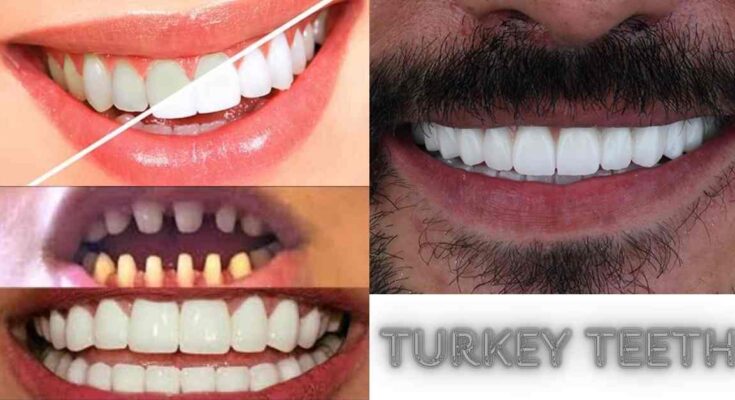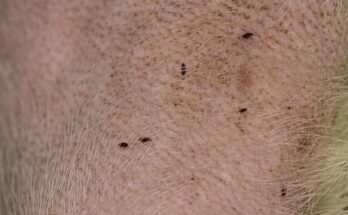Table of Contents
Introduction to Turkey Teeth
Welcome to the intriguing world of turkey teeth! While these majestic birds may not be known for their pearly whites like other animals, turkeys have a fascinating dental anatomy that plays a crucial role in their daily lives. Let’s dive into the unique features and functions of turkey teeth, shedding light on an aspect of these birds’ biology that often goes unnoticed. So, explore the hidden world of turkey dentition with us!
The Function of Turkey Teeth
Have you ever wondered about the function of those tiny teeth in a turkey’s mouth? Despite their small size and limited number, turkey teeth play a crucial role in helping these birds break down food for digestion.
Turkeys are omnivores, meaning they consume a variety of foods, including seeds, insects, and even small reptiles. Their teeth help them grasp and tear apart these different types of prey before swallowing.
These specialized teeth also assist turkeys in grinding down rigid plant material like grasses and leaves to extract essential nutrients. Essentially, the teeth act as tools to prepare food for further processing by the digestive system.
While not as prominent or numerous as human or carnivorous animal teeth, turkey teeth are uniquely adapted to suit their dietary needs. They may be small, but they pack a punch to aid the bird’s overall feeding process.
The Role of Turkey Teeth in Communication
Have you ever stopped to think about the role of turkey teeth in communication within their flock? While turkeys may not use their teeth for chewing like humans, they still serve a vital purpose in interactions.
Turkey teeth are essential for establishing dominance and hierarchy among the group. During displays of aggression or courtship, turkeys often show off their teeth to assert dominance or attract mates.
The size and condition of a turkey’s teeth can convey important information about its health and vitality to other flock members. Strong, well-maintained teeth can signal strength and good genes, making them more attractive mates or respected leaders.
Next time you observe a group of turkeys interacting, pay attention to how they use their unique dental features to communicate with one another. It’s truly fascinating how even something seemingly insignificant, such as turkey teeth, can play a crucial role in social dynamics within these birds’ communities.
What are the different types of Turkish teeth?
Have you ever wondered about the different types of teeth that turkeys have? Well, let’s dive into this fascinating topic! Turkeys possess a variety of teeth in their beaks, each serving a specific function. At the front, they have sharp incisors for tearing and grasping food. They have premolars and molars responsible for grinding and chewing rigid plant material.

These diverse types of teeth allow turkeys to efficiently process their diet of seeds, nuts, insects, and vegetation. Adapting these specialized teeth reflects the evolutionary journey that turkeys have undergone over time. From their ancestors to modern-day wild turkeys, dental structures have evolved to meet the survival demands in their natural habitat.
Understanding the nuances of turkey teeth not only illuminates their unique anatomy but also highlights how intricately nature has crafted these creatures. So next time you see a turkey strut by, take a moment to appreciate the complexity hidden within its seemingly simple beak structure.
How Turkey Teeth Evolved Over Time
Have you ever wondered about the fascinating evolution of turkey teeth over time? It’s a journey worth exploring!
Millions of years ago, ancient turkeys had sharp teeth that helped them tear through thorny vegetation and insects. Their teeth evolved as their diet changed, and they adapted to new environments.
Over time, these once prominent turkey teeth gradually became smaller and less pronounced. This shift in dental structure reflected the changing dietary habits of turkeys as they began to rely more on pecking at softer foods like seeds and grains.
The evolutionary process sculpted turkeys into the efficient foragers we see today, with specialized beaks designed for cracking seeds rather than slicing through flesh.
Understanding how turkey teeth have transformed throughout history offers a glimpse into the intricate adaptations that have allowed these birds to thrive in diverse ecosystems worldwide.
Dental Health in Wild Turkeys
Wild turkeys rely on their dental health to thrive in their natural habitats. Their teeth are crucial in ensuring they can effectively forage for food, including nuts, seeds, insects, and vegetation. Maintaining healthy dental hygiene is essential as wild birds constantly peck and grind their food using their beaks and teeth.
In the wild, turkeys face various challenges that can impact their dental health. For instance, consuming abrasive foods or encountering complex objects while foraging can wear down their teeth over time. Additionally, poor nutrition or underlying health issues may also affect the condition of a turkey’s teeth.

It is important to provide wild turkeys with a diverse diet that mimics what they would naturally consume in the wild to support optimal dental health. This helps ensure they receive essential nutrients to maintain strong and healthy teeth as part of overall well-being.
Observing a turkey’s eating habits and behavior can also offer insights into potential dental issues. By being attuned to changes in their feeding patterns or signs of discomfort while eating, caretakers can promptly address any emerging problems.
Promoting good dental health in wild turkeys contributes to their overall ability to thrive and survive in their natural environment.
How to Keep Your Turkey’s Teeth Strong and Healthy
To keep your turkey’s teeth strong and healthy, it is essential to provide a balanced diet rich in fibrous foods like fruits and vegetables. These help naturally clean your turkey’s teeth as it chews. Avoid feeding your turkey sticky or sugary treats, which can lead to tooth decay. Additionally, ensure access to fresh water at all times for proper hydration.
Regular veterinary check-ups are crucial for monitoring the health of your turkey’s teeth. A veterinarian can identify potential issues early on and recommend appropriate treatments. Providing safe toys or objects for your turkey to peck at can also help maintain dental health by preventing overgrowth of their beak.
Brushing your turkey’s teeth may not be necessary, but offering chewing opportunities with materials like hay or grass can promote natural wear, which aids in keeping their teeth trimmed. Remember, good oral hygiene is vital to your feathered friend’s overall well-being!
Differences in Domesticated and Wild Turkey Teeth
When comparing domesticated and wild turkey teeth, it’s fascinating to note the subtle yet significant differences that have evolved due to various factors. Domestic turkeys, bred for consumption, often exhibit more pronounced dental issues than their wild counterparts. The selective breeding process has inadvertently impacted the dental structure of domestic turkeys.
In contrast, wild turkeys boast stronger and sturdier teeth adapted for survival in their natural habitats. Their teeth are better equipped for a diet of seeds, insects, and vegetation in the wilderness. Wild turkeys rely on their robust teeth not just for feeding but also for self-defense against predators.
The stark contrast between domesticated and wild turkey teeth highlights the impact of human intervention on animals’ physiological features. It reminds us of the importance of preserving natural biodiversity to ensure species like wild turkeys can thrive with their unique adaptations intact.

Understanding the Importance of Turkey Teeth for Survival
Understanding the importance of turkey teeth for survival goes beyond mere chewing capabilities. In the wild, a turkey’s teeth are crucial for processing food efficiently to sustain energy levels and overall health. These specialized structures have evolved to adapt to their specific dietary needs, aiding in the breakdown of rigid plant materials and seeds.
Turkey teeth play a vital role in maintaining proper digestion, enabling turkeys to extract essential nutrients from their diet. Without these finely tuned dental adaptations, wild turkeys would struggle to obtain sufficient nourishment from their surroundings, impacting their ability to thrive in diverse habitats.
Moreover, turkey teeth contribute significantly to the birds’ communication skills within flocks and during courtship displays. Understanding how these unique oral structures support various aspects of a turkey’s life cycle gives us valuable insights into the intricate link between anatomy and survival strategies.
How to Care for Your Turkey’s Teeth
When it comes to caring for your turkey’s teeth, prevention is critical. Start by providing a balanced diet rich in fiber and nutrients to promote dental health. Avoid feeding them sticky or sugary treats that can lead to tooth decay.
Regularly check your turkey’s teeth for abnormalities such as discoloration, broken or loose teeth, or overgrowth. If you notice any issues, consult a veterinarian specializing in avian dentistry.
Consider incorporating chew toys or natural items like branches into their environment to help them naturally wear down their beaks and maintain oral health. Additionally, ensure access to clean water at all times to prevent dehydration, which can affect their overall well-being, including dental health.
Schedule routine visits with a poultry veterinarian for professional dental cleanings and examinations to keep your turkey’s teeth in top condition. Following these simple steps, you can help ensure your feathered friend maintains solid and healthy teeth throughout their life.
The Top 7 Dental Problems in Turkeys
Several common issues can arise when it comes to turkeys’ dental health. One prevalent problem is overgrown or misaligned teeth, leading to difficulty eating and overall discomfort for the bird. Another concern is tooth decay, often caused by a poor diet lacking essential nutrients.
Additionally, cracked or broken teeth can occur due to accidents or injuries during daily activities. Tartar buildup is common in Turkish dental care, leading to gum disease if left untreated. Abscesses may form due to bacterial infections, causing pain and potential complications.
Moreover, periodontal disease can affect turkeys like humans, resulting in inflammation and potential tooth loss. Malocclusion – where the upper and lower teeth do not align properly – can cause chewing difficulties and impact overall health.
Ensuring proper dental hygiene and regular check-ups are crucial in preventing these dental problems from escalating into more serious issues for our feathered friends.

Conclusion: Appreciating the Complexity of Turkey’s Anatomy
When we look beyond turkeys’ feathers and impressive plumage, we discover a fascinating world of anatomy that includes their often-overlooked teeth. These small yet crucial components significantly influence the turkey’s ability to survive and thrive in the wild. Understanding turkey teeth’ evolution, function, and importance sheds light on these magnificent birds’ biolog. It highlights the intricate web of adaptations that have allowed them to discover their place in nature.
As we marvel at the complexity of turkey anatomy, let us not forget to appreciate every aspect – including their teeth – as essential pieces in the puzzle of survival and adaptation. So next time you observe a turkey strutting through your backyard or hear its distinctive calls echoing through the woods, take a moment to consider the remarkable creatures they are, from beak to tail feathers.
Latest Posts [https://besaras.com/]










